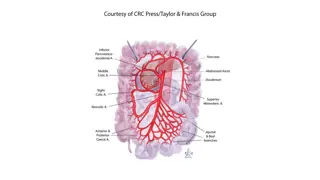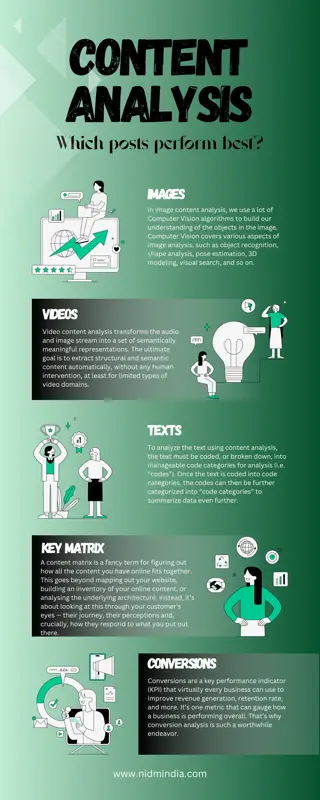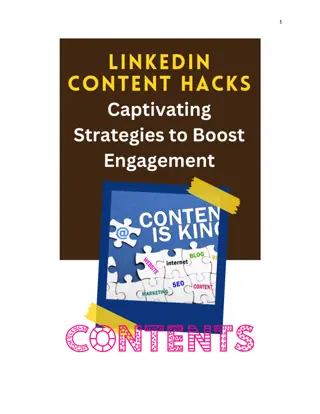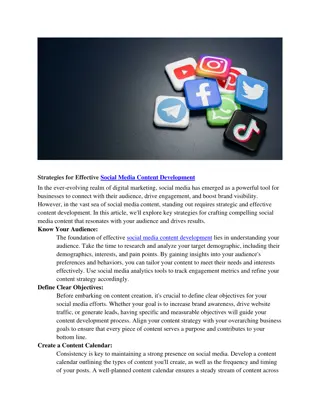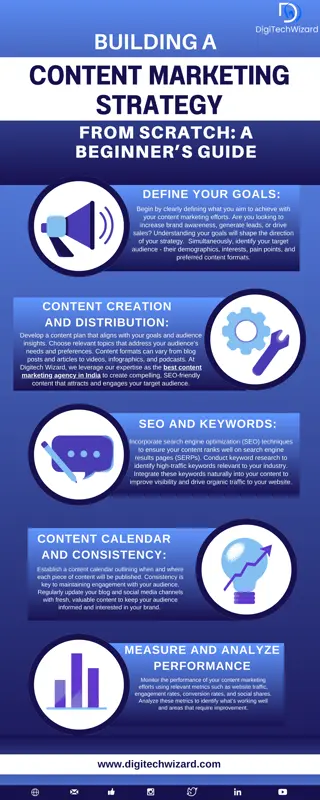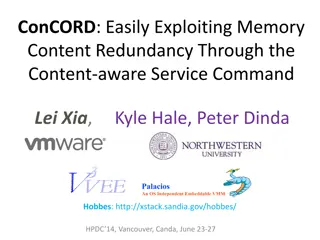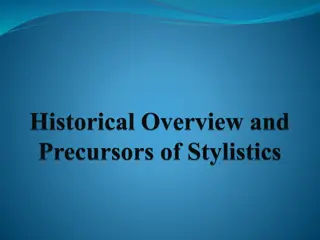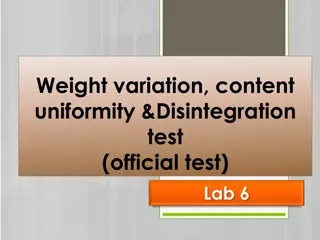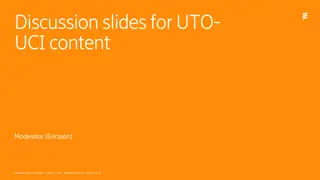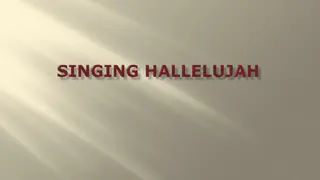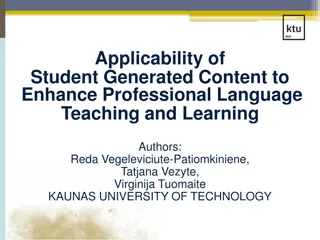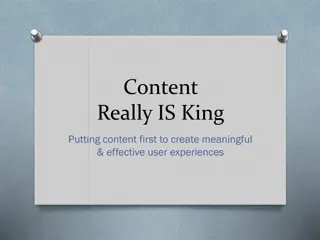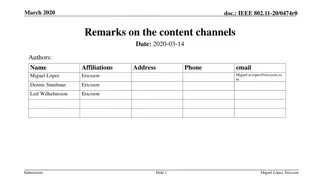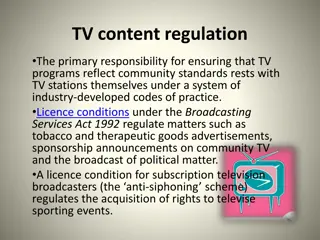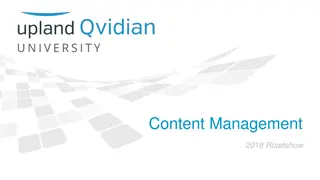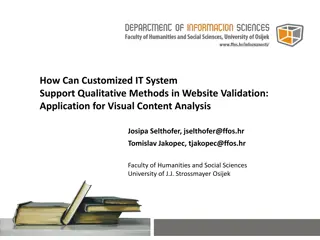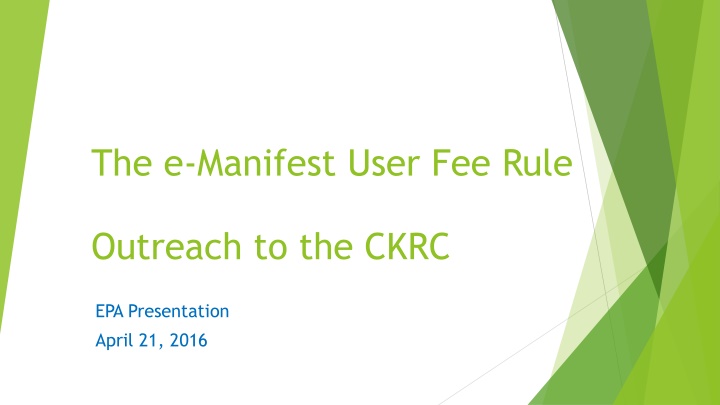
Understanding the e-Manifest User Fee Rule and Scope
Learn about the e-Manifest User Fee Rule Outreach presentation by EPA in April 2016, covering key issues and goals, fee rule scope and status, early management directions, regulatory issues, and more related to electronic manifests. Stay updated on the fee structure, user fees recovery, stakeholder outreach, and other critical aspects of the e-Manifest system.
Download Presentation

Please find below an Image/Link to download the presentation.
The content on the website is provided AS IS for your information and personal use only. It may not be sold, licensed, or shared on other websites without obtaining consent from the author. If you encounter any issues during the download, it is possible that the publisher has removed the file from their server.
You are allowed to download the files provided on this website for personal or commercial use, subject to the condition that they are used lawfully. All files are the property of their respective owners.
The content on the website is provided AS IS for your information and personal use only. It may not be sold, licensed, or shared on other websites without obtaining consent from the author.
E N D
Presentation Transcript
The e-Manifest User Fee Rule Outreach to the CKRC EPA Presentation April 21, 2016
Purpose Brief Update on Fee Rule Scope and Status Summarize Senior Management Direction Key Issues Presented in the NPR Update on System Development Next Steps 2
e-Manifest Fee Rule Scope and Status Fee Rule is 2nd phase of e-Manifest regulation development 1st phase concluded with publication of One Year Rule (Feb. 7, 2014) Legal framework for use of electronic manifests EPA workgroup was established in spring 2014 and worked extensively thru 2015 to develop notice of proposed rulemaking or NPR: Final Agency Review completed December 28, 2015 NPR now with OMB for Executive Order and Interagency Reviews Expect release by OMB in late April Goals for Fee Rule Completion: Publish NPR for comment (60 days) by mid-June of 2016 Issue Final Rule 90 days prior to system rollout in spring 2018 3
Fee Rule Scope -- Whats Included in Rule Announce fee setting methodology and initial fee schedule, Address key policy issues related to establishing user fees, Address several non-fee related manifest issues, Announce implementation date for e-Manifest system, and Discuss detailed cost/benefit impacts of e-Manifest One-Year Rule deferred Reg. Impacts Analysis for this Rule 4
Early Senior Management Direction: Keep the fee structure as simple as possible, The statutory definition of user precludes charging states or the public fees to access manifest data, Fee system should not disrupt industry relationships with generators and activities as manifest service providers, Fees should reinforce message that electronic manifests are preferred, Fee trajectory factors (e.g., CPI) should be built into initial fee system, User fees must recover all development and operating costs, and Basis for fees must be clear and transparent to stakeholders, and Stakeholder outreach critical to success. 5
Key Regulatory Issues Which e-Manifest users will be charged fees? Distinction in statute between users of manifest and those who access data If states and public exempt, how will we pay for the cost of their access? Q: Concerns if public access costs added to costs recovered by users? What transactional basis for fee collections and payments? Fixed Monthly Payments in advance of services, based on prior year s usage? Or Payments as reimbursement for services, e.g., monthly invoice for prior month s usage? Q: Do TSDFs have a preference on this question? What is the most efficient collection point in the business process? Payment by generators (100,000 payors) at time of manifest initiation? Payment by TSDFs (400 payors) at time of final submission by TSDF? Q: Do TSDFs prefer to pay fees for manifests completed in system, and pass fees through to their customers? 1. 2. 3. 6
Regulatory Issues (continued) 4. What payment methods will be supported? Electronic methods supported by Treasury s Pay.gov service Credit cards, debit cards, ACH debits, PayPal, Dwolla 5. Are there other transactions that warrant a special fee? Manifests of greater complexity? Sorting and returning stray documents submitted with paper? Help Desk encounters? Manifest corrections and related Q/A? 5. How to address fee trajectory and fee schedule revisions? CPI or other factors included in fee formulas for automatic adjustments? How frequently to revise fee schedules and what process? Do fee revisions require notice-and-comment rulemaking? 7
Regulatory Issues (continued) What costs will be tracked & included in fee determination? 7. System Setup: Costs incurred prior to system being operational Operations and Maintenance: Costs incurred after system roll-out Indirect Costs: Supporting costs not captured in above types Applied as a % rate to other direct costs What formula will we use to determine fees? 8. Should costs be distributed evenly over all manifests One flat fee? Should we differentiate between electronic and the several paper manifest submission types based on their varying processing costs? NPR proposed a differentiated fee keyed to the marginal cost of processing each type of manifest, with a shift to a more aggressive fee if electronic manifests do not attain 75% rate of us after 4 years. 8
Regulatory Issues (continued) How will user fee payments be enforced? 9. What financial penalties are applicable under federal law? Any role for denial of services? Should web site publicize those with seriously delinquent fees? What enforcement sanctions are appropriate? 10. Non-Fee Issues in the NPR: Transporter Regulation: Would allow addition or substitution of HW transporter on manifest, while shipment en route, based on generator consult or agency contract. Facility Regulation: Specifies how TSDFs can correct manifest data within 90-day period after waste receipts. Electronic process, online or batch submission. Generator Regulation: Would allow some mixed electronic/paper manifests, so that generator could retain a paper copy while others submit electronically. Request for comment: Should TSDF s paper manifest submissions be limited to digital means only (i.e., no snail mail)? 9
System Development Using lean start-up product development strategies with agile, user-centered software design/development methodologies i.e. Modular development practices building individual working pieces of the system and integrating it into the whole Address uncertainties from architecture planning work, and engage early with users and stakeholders. Bring down the cost of current and future development by addressing risk upfront and insuring that the work being completed brings actual value to stakeholders and users. Continuous improvement, using iterative processes, and regular engagement with users and stakeholders throughout the life of the program. User-centered design/development is underway. Small scale demonstration phase. Open source code and project progress engages industry/state users in the early phases of development, and creation of development platform and hosting environment. Will expand to all/every user type over time (e.g. states with no systems, large and small generators etc. etc.) 10
System Development Major Milestones of our most recent release TSDF receiving staff can upload test manifest data as received and electronically sign it using a CROMERR electronic signature (Password and second factor or digitized handwritten stylus/pen signature). TSDF users will be able to electronically update previously submitted manifest records. TSDF users will be able to upload a scan of a manifest for data entry. Provides initial data access and reporting tools to the user community. Electronic and Paper Manifests for a site will be accessible to authorized users. Next Steps Improve future BR (biennial reporting) integration. Continue to expand/iterate e-Manifest based on feedback from user community 11
Next Steps Expect Fee Rule NPR in late May to mid-June timeframe 60-Day comment period w/comments to regulations.gov Could be some new commenting tools available as well from 18F pilot Fee methodology, policy issues, and RIA estimates will be open for comment RIA projects annualized cost savings of about $34 million Cost savings increase through Year 6 and level out at about $100 million E-Manifest Team will hold public webinar on June 30, 2016 Check website for details on how, when to participate System Advisory Board will hold 1st meeting later this year Work on Final Fee Rule resumes in the fall 12




